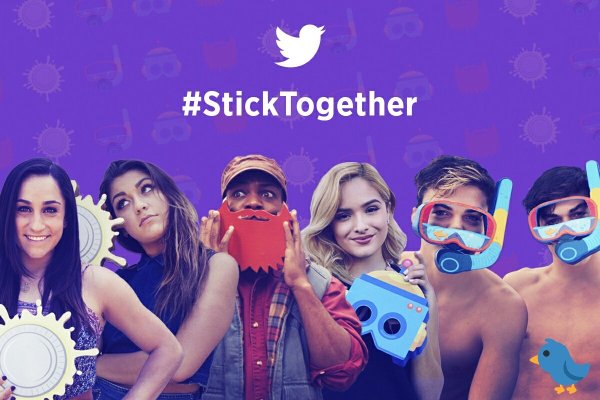Everyone else has stickers, so why not Twitter? Making good on its promises last month that it would soon be launching a new way for users to decorate the photos they’re sharing across its network, Twitter has officially rolled out stickers, the company announced. With the launch, users can browse through a library of accessories, emoji and other props that they can then place on top of photos, resize and rotate.
Stickers are a smaller feature, to be sure. And they’re also representative of how Twitter is still focused on playing catch-up with the larger social networks, like Facebook and Snapchat, which have offered a variety of sticker packs and other image-editing tools for years.
That being said, stickers could impact Twitter’s bottom line if it chooses to venture into brand-sponsored sticker packs or paid downloads.
Take, for example, Japanese mobile messaging app Line, which is making more than $20 million per month selling sticker packs. Its packs cost around $1 to $2 each for some dozen or more stickers, the company says. Line claims it’s now making over $270 million per year just from stickers.
It makes sense, then, that Twitter would want to venture into this potentially profitable territory as it tries to squeeze more revenue out of a stagnant user base that’s no longer growing by any significant means. In its Q2 earnings shared yesterday, Twitter claimed 313 million monthly active users – a figure that has grown only 3 percent from the year prior, and less than 1 percent from the previous quarter.
However, Twitter has managed to pull in advertising revenue, despite its smallish – comparatively speaking – user base. Its ad revenue increased 18 percent year-over-year to $535 million, the company reported.
For many Twitter users, however, the company’s focus on playing “me-too” with other networks, when it’s still facing a larger and more critical set of problems, rubs them the wrong way.
In response to its announcement that stickers are live, users tweeted back that Twitter needs to fix its app, let users edit tweets, address the rampant abuse, and make good on its other plans – like not counting pictures, videos and other media toward users’ 140 characters. (Twitter announced this change was coming in May, but it’s still not broadly available.)
Of these, the most pressing is that Twitter continues to face a massive trolling problem, which makes people not want to join its network for fear of being attacked, and makes others choose to leave.
